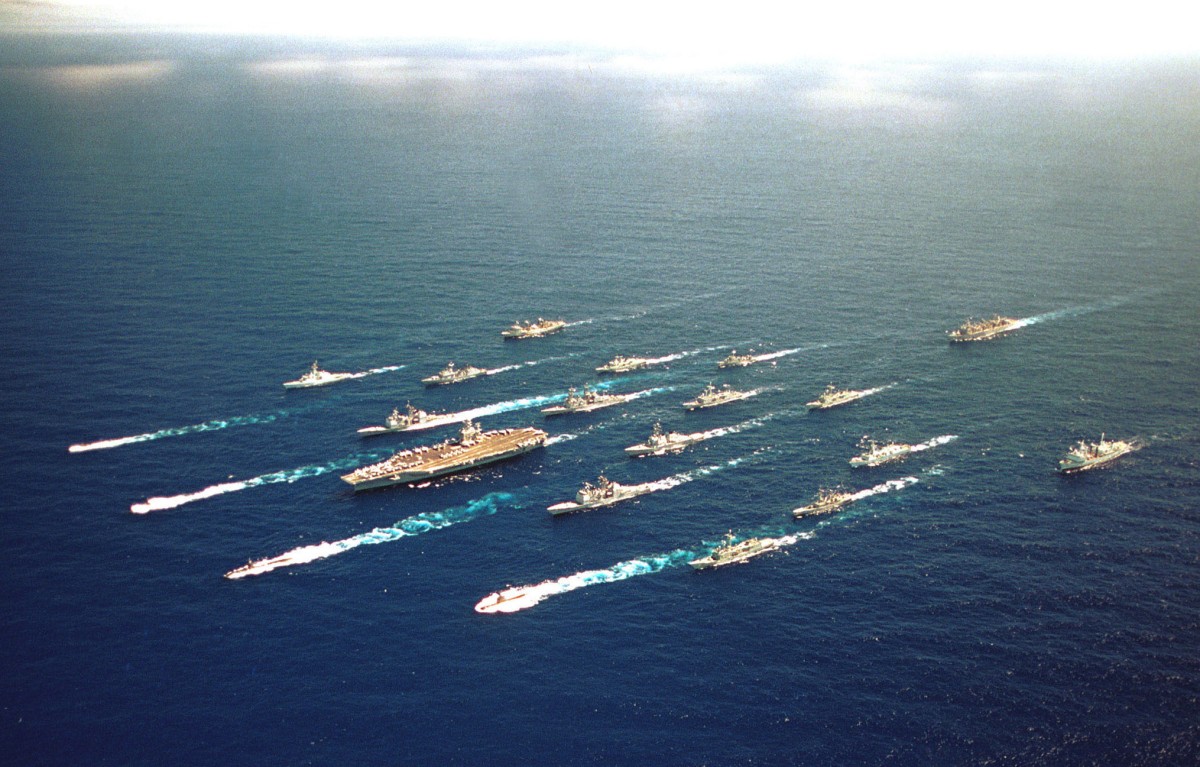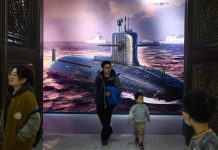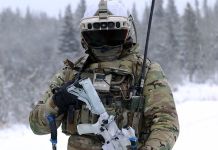The US Navy’s Naval Information Warfare Systems Command (NAVWAR) has installed Starlink and Kymeta terminals on the Nimitz-class aircraft carrier USS Abraham Lincoln (CVN-72).
This installation supports the Sailor Edge Afloat and Ashore (SEA2) program, which aims to deliver high-speed internet access through low-orbit satellites.
On August 20, the US military released images, including one featuring Information Systems Technicians Ashton Brandt and Brett Norton as they installed the Starlink and Kymeta terminals aboard the USS Abraham Lincoln.
This technology is designed to enhance sailors’ connectivity by providing them with fast, stable, and secure internet access, which is expected to significantly improve life at sea.
According to a press release from the US Navy, SEA2 has been fully operational on the USS Abraham Lincoln and has dramatically transformed the maritime experience for sailors.
The new system offers a reliable connection, boosting morale and enhancing work productivity. The US Navy said the innovation has fostered a new internet culture on board, emphasizing the safe and balanced use of Wi-Fi while at sea.
Cmdr. Kevin White, the combat systems officer on the USS Abraham Lincoln, explained that SEA2’s primary goal is to extend beyond its tactical uses.
The initiative focuses on enhancing sailors’ connectivity to their homes and providing tools that improve their job performance. By advancing this system and incorporating additional tactical capabilities in the future, the US Navy aims to gain a significant tactical advantage.
One notable example of SEA2’s impact is a Super Bowl party held aboard the USS Abraham Lincoln on February 11. For the first time, the carrier was able to broadcast a live stream of the game, thanks to the high-speed internet provided by SEA2. According to the Navy, around 800 sailors enjoyed the event while at sea.
Further demonstrating SEA2’s versatility, a photo shows Cmdr. Kevin White, combat systems officer on USS Abraham Lincoln (CVN-72), engaged in a live video call with Lt. Giovanni Scozzi, the combat systems officer on the Italian aircraft carrier Cavour.
This interaction highlights SEA2’s role in facilitating international military cooperation. It allows for real-time planning and coordination of bilateral exercises between two ships.
The service said that the SEA2 initiative represents a major leap forward in naval technology, originally conceived as a solution to a critical gap in fleet connectivity. By leveraging NAVWAR’s expertise and industry best practices, the project has introduced a scalable and cohesive package that is setting new standards for the US Navy.
The US Navy further announced that SEA2 is on the verge of being deployed across every Navy ship and additional shore sites, promising to extend its benefits to a broader range of naval personnel and operations.

Navy’s SEA2 System Revolutionizes Ship Communications
For the past three decades, US Navy ship communications have depended on Department of Defense (DOD) satellites, which orbit approximately 22,300 miles above Earth in geostationary orbits.
This distance, while providing a wide coverage area, resulted in slow data rates due to the lengthy signal travel time between the satellite and the ship. Further, the COVID-19 pandemic highlighted the limitations of traditional satellite communications.
In March 2020, pandemic-related port call restrictions left ships cut off from the world, underscoring the urgent need for improved internet access. To address these issues, the Navy has turned to low-orbit satellites to provide a more robust and reliable connection, ensuring that ships remain connected even in isolated conditions.
With satellites from Starlink and OneWeb operating between 375 to 750 miles above Earth and numbering around 7,000, naval communications have become significantly faster and more reliable. These low-orbit satellites are positioned closer to the Earth, reducing the signal travel time and thus enhancing data rates and connectivity.
Notably, Elon Musk’s SpaceX has been delivering global broadband services via its growing Starlink constellation for quite some time. In 2022, the company introduced Starshield, a service specifically designed for government and national security applications.
In February 2023, the Navy installed a Wi-Fi-enabled Starlink system on its newest and most advanced aircraft carrier, the USS Gerald R. Ford (CVN-78). This installation enabled crew members to communicate quickly and easily with their families.
The US Navy is currently working to expand this initiative. Earlier this year, the Navy expressed its intention to assess SpaceX’s Starshield/Starlink terminals on at least two deploying ships, with plans to eventually incorporate this broadband capability across as many as 200 vessels.
The US Navy said that utilizing low-orbit satellites for naval communications required overcoming three key challenges: establishing laser crosslink capabilities for inter-satellite communication, creating a downlink for shore site connectivity, and developing a mobility code to maintain satellite connectivity as ships traverse oceans.
The Program Executive Office Command, Control, Communications, Computers and Intelligence (PEO C4I) at NAVWAR was tasked with addressing these challenges through its PMW 170 Communications and Global Positioning System Navigation program office.
The result was STtNG (Satellite Terminal transportable Non-Geostationary), a system that provides secure access to low-orbit satellites with a throughput of 30 to 50 megabits per second. By connecting multiple Starlink antennas, the system achieves speeds of up to one gigabit per second.
The service explained that SEA2 has set new benchmarks in speed and functionality, achieving operational certification 20 times faster than previous programs. Its cybersecurity certification is especially remarkable, representing a significant improvement over previous systems that lacked full operational authority and were only accepted with reservations.
Looking ahead, SEA2’s enhanced speed and capabilities are expected to further improve tactical advantages. Initiatives such as Flank Speed Edge, a cloud system capable of transferring terabytes of data to shipboard users, are in development, promising to extend the benefits of this revolutionary connectivity solution throughout the Navy fleet.
- Contact the author at ashishmichel(at)gmail.com
- Follow EurAsian Times on Google News




